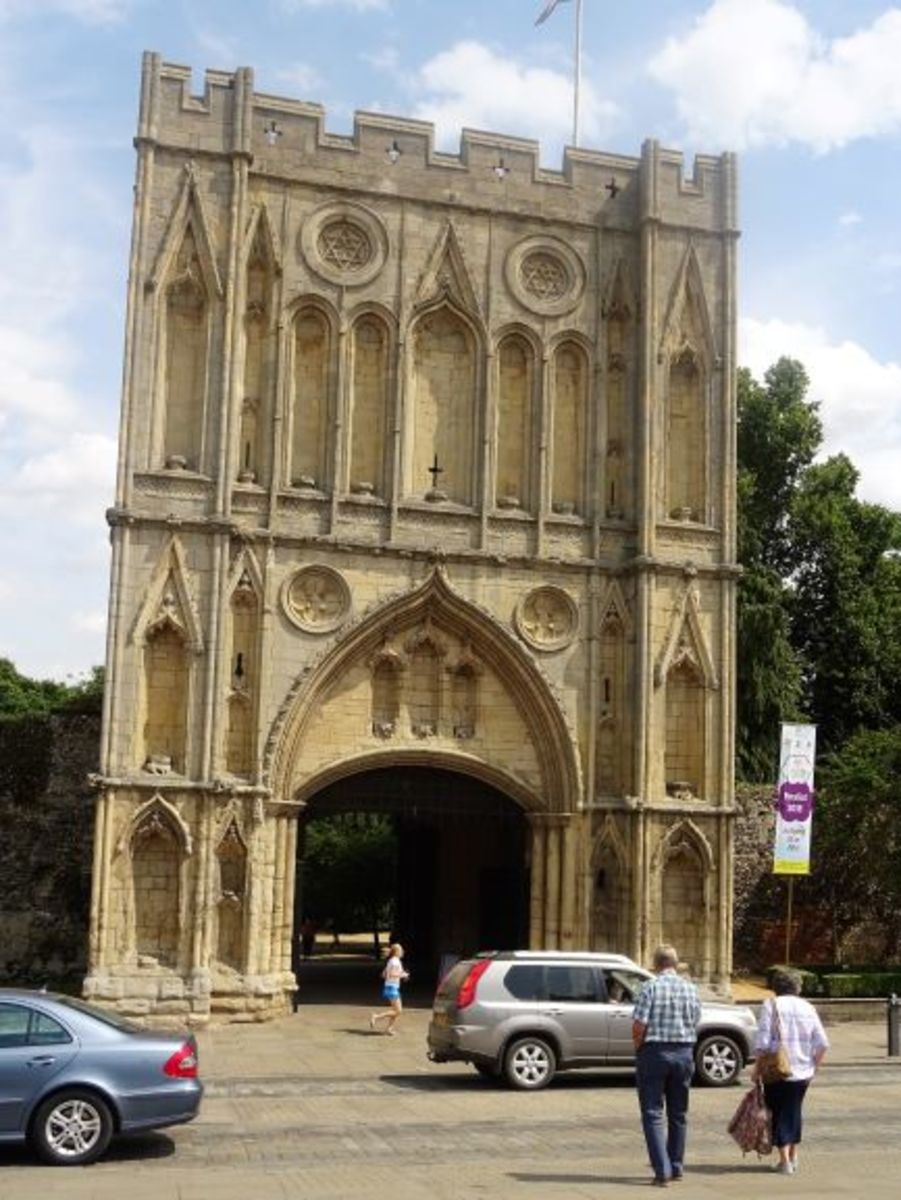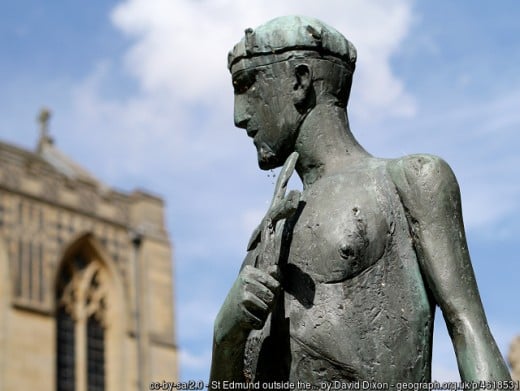Bury St Edmund's, once a small medieval market town boasting an enormously wealthy abbey that was one of the most important places of pilgrimage in Europe, is one of the treasures of the English county of Suffolk. Nowadays, Bury in Bloom is a consistent award winner in regional competitions and a contender for the big prizes in Britain in Bloom awards. Visitors flock here for the floral displays, wonderful and diverse architecture, a spectacular cathedral, the church where the remains of Henry the Eighth’s favorite sister, Mary, a Queen of France, were laid to rest, and to see the ruins of the destroyed Abbey that was dedicated to the memory of St. Edmund. The only surviving Regency theater in England is in Bury St Edmund. Charles Dickens stayed here, at the Angel Hotel, on three occasions. A wealth of specialist shops and boutiques and great award-winning restaurants add to the attractions of this pretty town. I have visited here often and I am never disappointed. Join me on a tour …
The Diverse Architecture of Bury St Edmund's
Click thumbnail to view full-size










The Smallest Pub in Britain is in Bury St Edmund's
Take of Tour of the Greene King Brewery in Bury St Edmund's
The Greene King brewery has a rich history in Bury St. Edmunds, dating back over 200 hundred years. Its traditionally crafted beers are legendary amongst beer drinkers and are nowadays sold in over 3000 pubs, restaurants, and hotels throughout the UK. You can take a tour of the brewery and then sample the beers in the on-site Greene King Brewery Cafe.
Tours cost £14 per ticket (2018) and places are quickly sold out. Book online if you would like to visit.
The Abbey Gardens and Benedictine Abbey Ruins in Bury St Edmund's
The delightful, extensive, award-winning municipal gardens are situated on the site of what was once one of the richest and most important Benedictine monasteries in England. The monastery was destroyed during the 16th-century dissolution of the monasteries by King Henry VIII and only a fragment now remains of what once was. Enter through the magnificent and complete Great Gate, marvel at the ruins, stroll along the meandering pathways through the flowerbeds, and take a welcome break in the Garden Cafe.
The Abbey Gardens in Bury St Edmund's
How did Bury St Edmund's Get its Name and who was Saint Edmund?
- Edmund was a King of the East Angles, killed by the invading Danes in 869.
- The Abbey was built in the early 11th century to house his remains. A cult arose around his legend and reputation. The shrine became a place of pilgrimage until the monastery was destroyed and the monks turned out during the reign of Henry VIII.
- Local legend tells that the body of the martyr was found by local people but that it had been decapitated. The cries of a wolf drew attention and it was discovered that he was howling over the head of Edmund, which later was miraculously re-attached to the body.
The Wolf and the Crown Statue at Bury St Edmund's

A Modern Statue of Saint Edmund
A Visit to Saint Edmundsbury Cathedral in Bury St.Edmunds
Step inside the cathedral and the first impressions are of a light, bright interior and of a stunning array of tapestry kneelers which await worshippers, a different design on each of them. Explore a little further to find exquisite modern craftsmanship and spectacular arts and craft works.
The great church of the once immense and wealth abbey has undergone substantial improvement works in recent years. The Millennium Tower was completed in 2005. Further works have been funded by an allocation from the Government's First World War Cathedrals Renovations Fund, which was allocated in preparation for the 2018 centenary celebrations of the end of the War.
Images of Saint Edmundsbury Cathedral
A Visit to Saint Mary's Church in Bury St Edmund's
Originally part of the Benedictine Abbey, St. Mary's Church was one of three churches built into the abbey precincts. It is now the Civic Church of the Town and Borough of Bury St Edmunds. Distinctive feature of the church are the 213 ft nave, which is the longest in an English parish church, and the unique hammer beam 'angel' roof.
The remains of Mary Tudor, the favourite sister of Henry VIII, for whom he named his famous battleship the Mary Rose, lie in an insignificant resting place by the High Altar. Mary married the King of France and after her widowhood returned to her native country with Charles Brandon, Duke of Suffolk. A stained glass window, given by Queen Victoria, depicts her story.
The Only Surviving Working Regency Theater in the UK. The Theater Royal in Bury St Edmund's
Built in 1819, the theater is now owned by the National Trust and is operated as a lively working theatre and is said to be one of the most beautiful,intimate and historic theatres in the world. I can attest to the uniqueness of the theater,having visited here several times to watch performances by the ballet school attended by my niece during her younger days. If you plan to attend a performance at the theatre, you will find that the seating is wooden benches. Take a cushion!
Tours lasting 75 minutes are available on certain days, except during the winter months. Tickets cost £7.50 (2018).


Getting to Bury St Edmund's
Only 35 minutes from Cambridge and just under 2 hours from London, Bury St. Edmund's is easily accessible by road and by rail. The train station is a ten-minute walk from the town center. Regular trains run from London Liverpool Street Station, Cambridge, Ipswich, and Peterborough.




